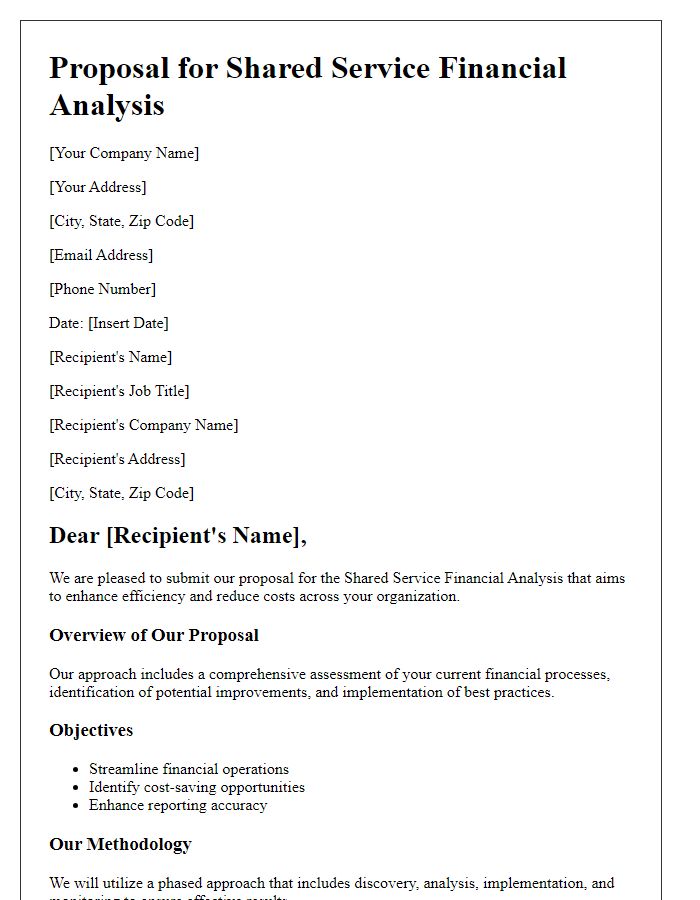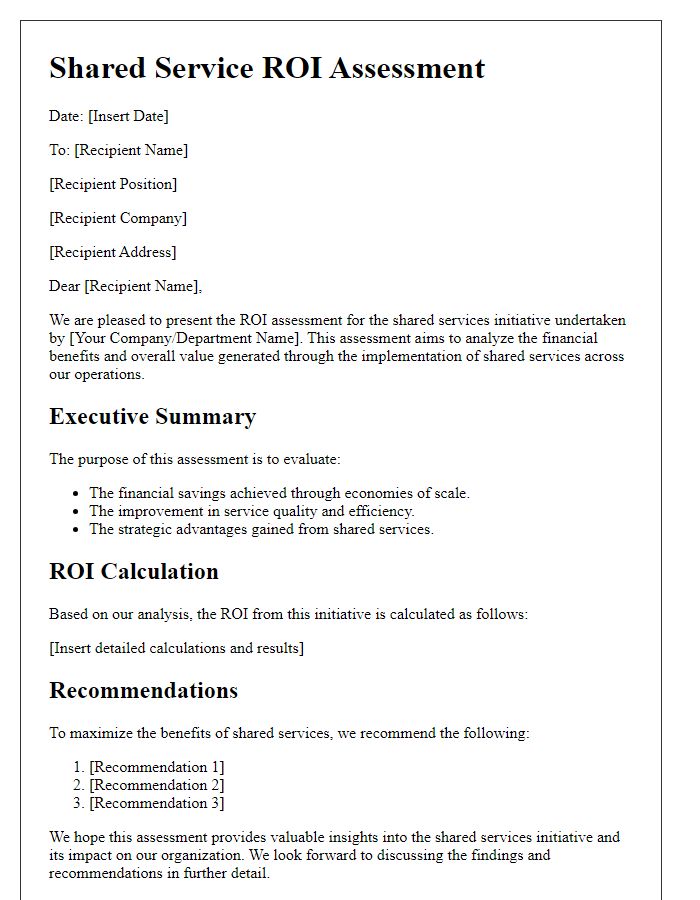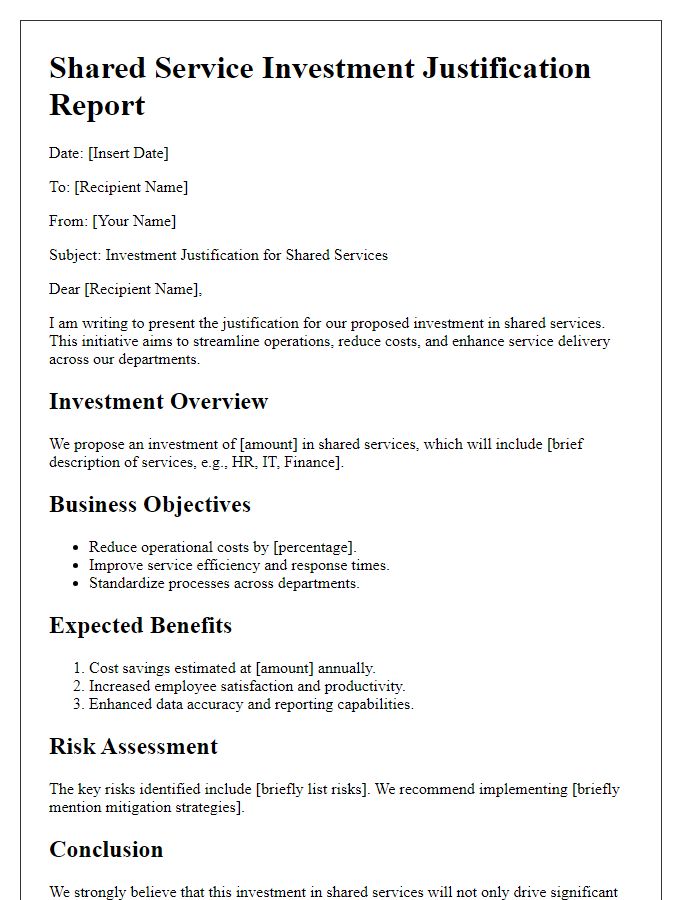Are you considering implementing a shared service model but unsure about the potential cost benefits? In today's fast-paced business environment, understanding the financial implications of shared services is crucial for making informed decisions. This article will guide you through the essential steps of conducting a shared service cost benefit analysis, helping you identify both direct and indirect savings. Join us as we explore this topic further and discover how shared services can enhance your organization's efficiency!

Introduction and Executive Summary
A shared service cost benefit analysis evaluates the financial and operational impacts of consolidating services across departments within an organization. This analysis aims to highlight potential savings, efficiency improvements, and enhanced service delivery through centralized operations. The executive summary succinctly outlines key findings, demonstrating how shared services can streamline processes, eliminate redundancies, and foster innovation in service management. It also emphasizes the projected cost reductions, typically quantified in percentages against the baseline operational costs, and outlines future growth opportunities. Focused attention on core competencies can lead to increased value for stakeholders and improved customer satisfaction across various service areas. The analysis serves as a strategic tool to guide decision-making and resource allocation, ensuring that the transition to shared services is beneficial and sustainable in the long term.
Cost Analysis and Breakdown
Cost analysis for shared services involves evaluating various financial aspects related to shared resources in a business environment. Shared service centers (SSCs), often used in sectors like finance, HR, and IT, seek to reduce operational costs through economies of scale and improved efficiencies. Key components of cost breakdown include initial setup costs, such as technology infrastructure expenses, typically ranging from $150,000 to $500,000, and ongoing operational costs, including staff salaries and training, which can account for 60-70% of total shared service expenditures. Additionally, measuring qualitative benefits requires assessing service quality improvements and efficiency gains, often reflected in reduced cycle times for processes such as payroll or procurement. Metrics such as customer satisfaction scores, employee productivity rates, and return on investment (ROI) calculations over a three to five-year period provide insights into the financial efficacy of shared services.
Benefit Analysis and Projection
A shared service cost benefit analysis provides insights into the financial impact of consolidating resources across departments or entities, such as administrative tasks in corporations or public sectors. With organizations like GE or the City of Los Angeles implementing shared services, projected savings can range from 15% to 30% annually based on reduced redundancy and streamlined operations. The analysis examines key variables such as personnel costs, technology expenses, and overhead, quantifying savings through metrics like return on investment (ROI) or payback period in months. Effective tracking of performance indicators, including service level agreements (SLAs) and customer satisfaction rates, forms the backbone of gauging long-term success.
Risk Assessment and Mitigation Strategies
Shared services can provide significant cost savings and operational efficiencies for organizations. Risk assessment in shared services includes identifying potential hazards, such as data breaches, service disruptions, compliance failures, and operational risks. Specific examples include examining previous incidents with various shared service providers. Strategies for mitigation encompass implementing robust cybersecurity measures (e.g., firewalls, encryption), establishing service level agreements (SLAs) to ensure accountability, and conducting regular compliance checks aligned with industry standards like ISO 27001 or GDPR. Continuous improvement practices, like employee training and feedback loops, help maintain service quality and reduce misunderstandings. Overall, a thorough assessment and targeted mitigation strategies can enhance the resilience and reliability of shared services within an organization.
Conclusion and Recommendations
In a comprehensive shared service cost benefit analysis conducted for organizational efficiency, findings reveal a significant reduction in operational expenses through centralized services. For instance, consolidating human resources and finance functions across five divisions can yield a potential savings of approximately 25% in labor costs, translating to an annual reduction of around $500,000. Additionally, investment in cloud-based technology, estimated at $200,000, enhances service delivery and increases accessibility for remote employees, aligning with current hybrid work trends. Recommendations emphasize a phased implementation of shared services over two years, ensuring thorough employee training and engagement to facilitate smooth transitions. Adopting key performance indicators (KPIs) will enable ongoing measurement of service efficacy and cost savings, ultimately steering the organization toward sustained operational excellence and innovation.













Comments